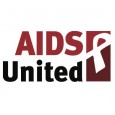On November 29th, the Centers for Disease Control and Prevention (CDC) posted “Vital Signs: Trends in HIV Diagnoses, Risk Behaviors, and Prevention Among Person Who Inject Drugs” as an “early release” in the Morbidity and Mortality Weekly Report (MMWR). The report, which determines that Syringe Service Programs (SSPs) are “an effective tool for reducing substance misuse and risk for HIV Infection” among people who inject drugs (PWID), calls for the expansion of SSPs due to the 2015 modification to the federal ban on funding SSPs and the opportunity to “improve provision of comprehensive prevention services” for PWID by broadly expanding and implementing SSPs.
The opioid and overdose crises — and the shifting demographics and geography of opioid injection — have driven the evolving federal relationship with syringe service programs. While the CDC has historically been supportive of SSPs as an effective intervention for PWID, Congress has largely blocked federal funding from supporting these programs since the very beginning of the HIV epidemic. The 2014-2015 HIV outbreak in Scott County, Indiana — and the realization that 220 counties across the US were vulnerable for the same — has led to a rapid shift in federal rhetoric around SSPs. Michael Botticelli, Director of the White House Office on National Drug Control Policy (ONDCP), has spoken in favor of syringe service programs and even spoke at the National Harm Reduction Conference back in 2014. The report examined the declining HIV diagnosis rate among PWID — down 48% over between 2008 and 2014 — while acknowledging that the decline is stalling. Annual HIV diagnoses fell for black and Latino PWID by roughly 50% from 2008-2014. However, white PWID saw only a 28% decline between 2008 and 2012, and no decline between 2012 and 2014. The expansion of syringe service programs is cited as the likely reason for the decline, and roughly 50% of PWID had used an SSP in 2015. However, that same year, only 25% of PWID reported that they were able to receive all their syringes from sterile sources. The report concludes that “Although access to syringes from SSPs has increased, the supply of sterile syringes available to most PWID is likely to be insufficient to meet their needs, and barriers remain to accessing SSPs, including lack of SSPs in rural areas and absence of legal support in many states”
On December 13th, the CDC hosted a teleconference to discuss the Vital Signs report and invited several presenters to discuss the implementation of syringe service programs in their jurisdiction. Matt La Rocco, Harm Reduction & Community Outreach Specialist in Louisville, Kentucky and Jim Johnson, Director of the Mayor’s Office of Drug Control Policy in Huntington, West Virginia spoke to the successes, challenges, and lessons learned over the past two years as they sought to implement new SSPs in their jurisdictions. The importance of community collaborations, partnership with law enforcement, partnership with the faith community, and involvement of PWID in program design were all cited as integral to the success of a newly established SSP. As Matt La Rocco stated:
“People who inject drugs (PWID) are your best source of information for what services your program needs to provide, what barriers may keep PWID from coming to your program, and what supplies you need to have at your program. PWID are experts in their own lives, we are not.”
The Vital Signs Report and teleconference demonstrate how far we’ve come as a nation in rethinking our substance use response, and the growing shift away from a punitive law enforcement approach towards one centered in public health. This Vital Signs report comes on the heels of the groundbreaking Surgeon’s General Report on addiction “Facing Addiction in America”. These reports would have seemed far-flung fantasy even two years ago, as would the passage of $1 billion dollars to expand opioid treatment passing through Congress with broad bi-partisan support.
With a new administration set to take the reins of US law enforcement and public health policy, advocates are left wondering if this shift towards a public health response to substance use can be sustained. AIDS United is committed to working with our community partners to ensure that the prevention and treatment needs of people who inject drugs remain at the forefront of our national response to the opioid crisis.








Comments
Comments